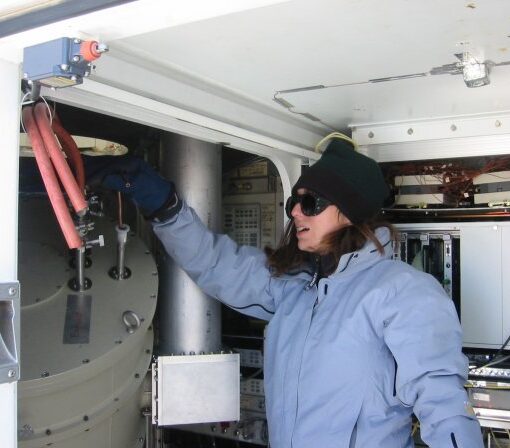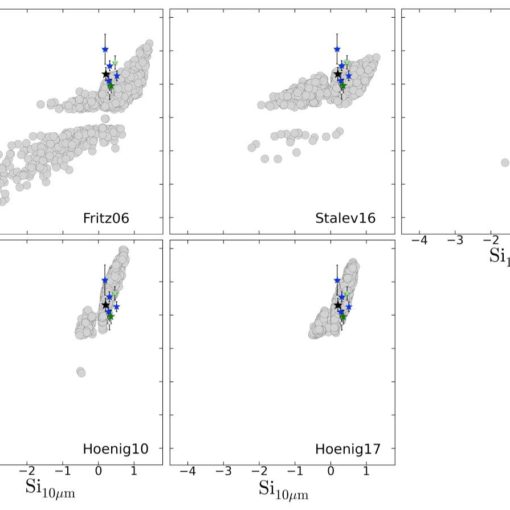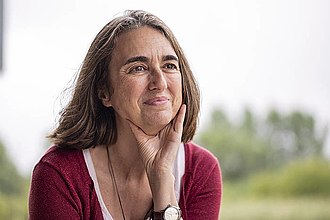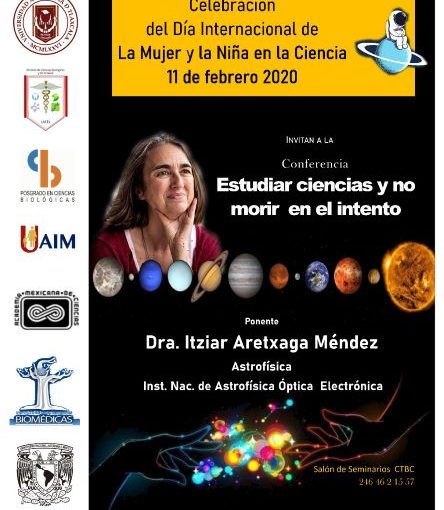Also available in: Español (Spanish) Euskara (Basque)
Author: Oiasso Museum
Originally published (in Spanish and Basque) in the web page of Oiasso Museum, Irun, Spain on 2022/03/08
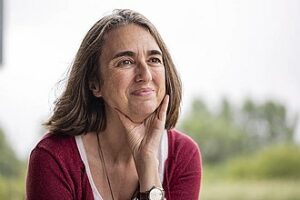
ON THIS INTERNATIONAL WOMEN’S DAY WE HAD THE OPPORTUNITY TO TALK TO THIS WOMAN, A HIGH-LEVEL SCIENTIST ABOUT HER WORK, HER LATEST RESEARCH, AND OF COURSE, WE WOULD ALSO LIKE TO TALK ABOUT THE PROJECT SHE IS WORKING ON TO SUPPORT YOUNG SCIENTISTS, AND HER LOVE FOR UNDERWATER PHOTOGRAPHY, AND ALSO ABOUT BASQUE, AND… HER CAREER
HER CAREER
Itziar Aretxaga began her Physics studies in Bilbao and finished them in Madrid. PhD in Astrophysics, with her thesis “Optical variability of active galactic nuclei generated by star formation”. Later she worked in Madrid, as well as at the Royal Greenwich Observatory in the United Kingdom and at the Max Planck Institute in Germany, and since 1998 she has worked at INAOE, the National Institute of Astrophysics, Optics and Electronics of Mexico. There she was coordinator of the Department of Astronomy of the Mexican Academy of Sciences (2006-2013). She directed the Department of Astrophysics at INAOE (2011-2016) and has participated in numerous international research projects on galaxy clusters, active galactic nuclei, the formation and evolution of galaxies, as well as supernovae. She has discovered more than 1,000 galaxies with the Large Millimeter Telescope of Mexico – the largest radio telescope in the world dedicated to millimeter waves, between 1-3mm. She is also the director of the ISYA International School for Young Astronomers. Itziar lives in the world of stars, in the real world of stars. It is very interesting to listen to her, because even though she is a high-level scientist, she is an incredible woman who knows how to passionately express what seems inexplicable. In December 2019 we had the opportunity at the Oiasso Museum to enjoy her talk on the book “The Republic” by Cicero, the knowledge of astronomy at that time, and the influence of this book on her. It will be impossible to forget that talk.
INTERVIEW
You are an astrophysicist, a woman, you live in Mexico, and you continue to maintain the Basque laguage while living there… You are an example for many women. How did you come to astrophysics and to investigate the galaxies that are at the limit of our vision of the universe? Did you dream of the stars as a child or did you find your way?
The truth is that it is not a planned path. When I was young, at university, I did dream of dedicating myself to the world of research, but I didn’t know if I was going to make it. It is then that I became interested in astrophysics in particular, although science and physics had always attracted me very particularly. Of course, I never imagined that I would live and work in Mexico to achieve that dream. Life is taking care of putting difficulties and opportunities where one does not imagine. You just have to have an open mind to the possibilities and trust that you can develop properly wherever you are.
What is one of the discoveries you have made that you can feel most proud of?
For me that is an impossible question to answer. It’s like asking which child you love most. I have more than 140 scientific publications… imagine! Perhaps the most surprising and rewarding discoveries have been linked to the search for galaxies at great distances or with very extreme properties, through very deep maps of the extragalactic sky. The excitement that each new record brings seems like a child’s play, but it is very exciting. Plus when those discoveries are tied to graduate student theses, it’s even more rewarding.
Archaeologists search the earth for its remains to investigate the past, and astronomers investigate looking up. Presumably, throughout the history of humanity there has been a look towards the universe, which scientific woman would you highlight in history?
The super heroine is of course Marie Curie, not in vain she won two Nobel prizes at a time when, just look at the photos of the congresses of the time, she was one of the few women who dedicated herself to research. However, his research is far from mine. In my field I would highlight Vera Rubin, who definitely made great contributions to the establishment of a new paradigm in which dark matter is the most important material component of the Universe.
Many of the studies are carried out by women but still today few names of women appear prominently in the results of said investigations, what should be done?
The most outstanding recognitions, such as international awards and the leadership of universities and research centers at the highest level, and the progression of women’s careers to the highest levels of recognition, are undoubtedly stagnant. If one analyzes the statistics of how women and men progress in the world of research, one sees a clear gender bias in which there are not enough women with high honors. Unfortunately there are still many colleagues who do not see a problem in this, and even think that there is no problem.
I think that all that remains is to continue talking about this topic and be aware that both men and women have these unconscious biases, so that we always have to ask ourselves if they will not influence our decisions. In addition, there are preventive measures such as double-blind evaluations (the evaluator does not know who is being evaluated) that I believe are important to spread in the scientific community.
Thanks to technology, the ability and scope to see and study the universe has been evolving, especially in recent years. What is the latest research you are involved in?
Right now I am finishing a paper with a student on the properties of very dusty galaxies in which we show that their evolution over time is similar to that of visually selected more massive galaxies. These are studies carried out with the Hubble Space Telescope, which is still playing a major role in research.
In addition, at the moment I am preparing my suitcase to join a campaign to install the new imaging instrument for the Large Millimeter Telescope, TolTEC, with which in the coming years we hope to make images of very large areas of the sky that will allow us to detect hundreds of thousands of distant dusty galaxies to better understand their evolution over time.
You have been collaborating for many years with an international project to support the studies and research of young astrophysicists from developing countries. Could you explain us this project and what is your work?
I am the director of the International Schools of Young Astronomers of the International Astronomical Union, the organization that integrates the world’s professional astronomers. We organize intensive graduate schools in places where students do not have access to a wide range of topics for astronomy research, either because their communities are small or because they are isolated. We invite them, all expenses paid, to interact with a dozen internationally renowned professors for three weeks, through an intense program of classes, workshops, laboratories, and observations. These schools create a support network for the development of their postgraduate theses and it is often their first international interaction, in which they meet other students in the same conditions. It is a program aimed at reducing the gap in access and development of new knowledge in the world.
In addition to astrophysics, you have many more interests, such as underwater photography. You have held exhibitions, you have won prizes, you have a page on Instagram… what does this other world of silence bring you?
For me it is fun and also a therapy that resets me with my essence as a human being. It is the perfect environment to connect with nature and forget about my day-to-day problems. We have to get our heads out of research and push other activities that allow us to be whole people. These activities related to artistic creativity, sports, exploration relax me and give me a personal perspective on who I am.
http://www.itziararetxaga.net/category/diving/underwater-photos/
You learned to speak Basque as a teenager and 40 years later you still speak Basque even though you live in Mexico…
I learned Basque before entering university and I am part of the first generations represented in the commemorative spiral of the UPV/EHU arboretum, which marks the introduction of Basque in the formal education of the Faculty of Science and Technology. Later, at the age of 20, I went to Madrid to continue my studies, and from there to travel the world.
Today I speak Basque only when I travel to the Basque Country. I use it little, but I keep it up thanks to the online Mintzapraktika programs (for at least 6 years I participated in them), and now more than anything thanks to the radio programs that I listen to on the internet and through books and social networks.
I believe that whoever wants it, can speak it. Today there are many means of learning and many free resources online. It’s not necessarily to speak it perfectly, of course as well as possible, but for me the most important thing is being able to communicate and fully participate in the local culture.
Finally, have you experienced any exclusion for being a woman?
Probably yes, but I am not aware of it. I have not suffered discrimination or obvious and reportable abuses of power, but that does not mean that I have not been subjected to unconscious gender bias. The career progress statistics for female scientists tells us that this bias exists, and it is very unlikely that it operates on the general population of female researchers, and I have been the exception.
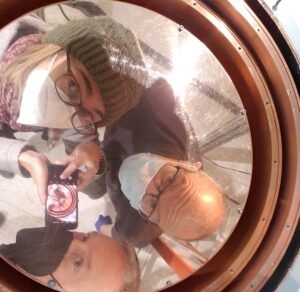 http://www.itziararetxaga.net/
http://www.itziararetxaga.net/
